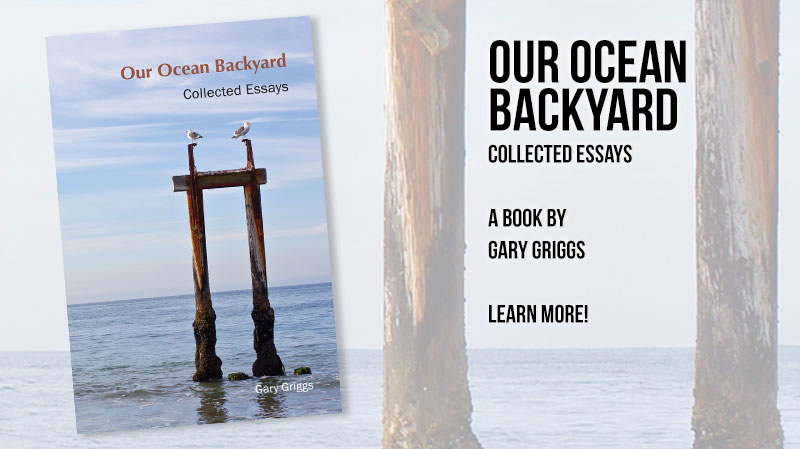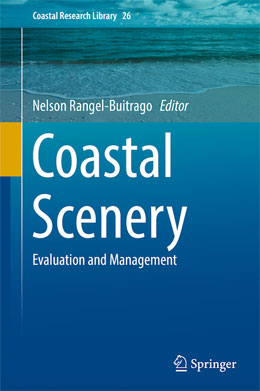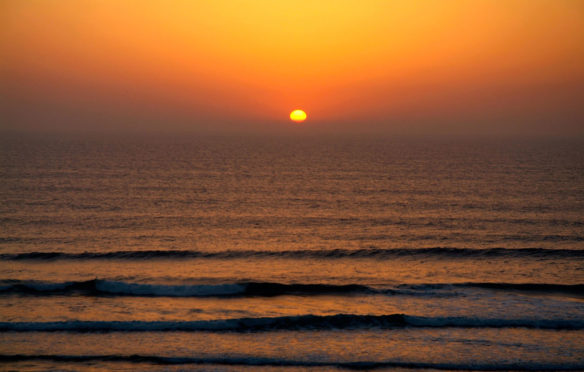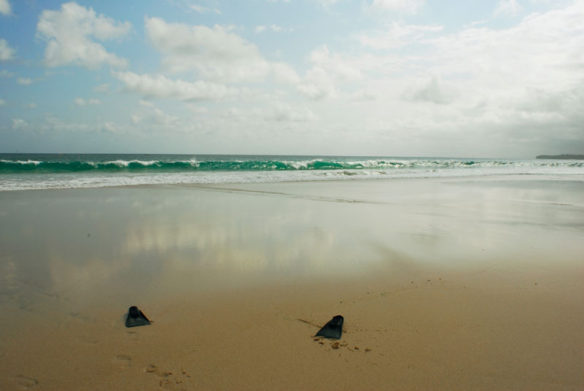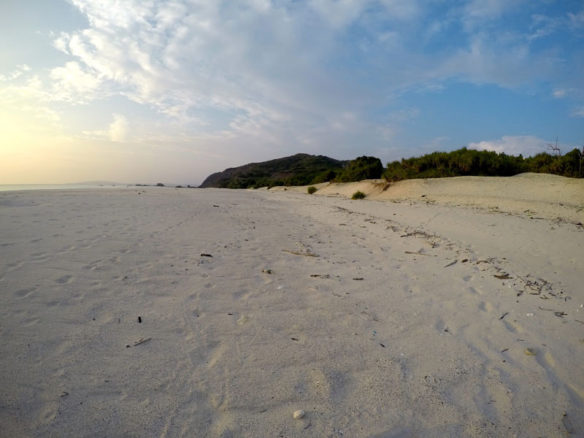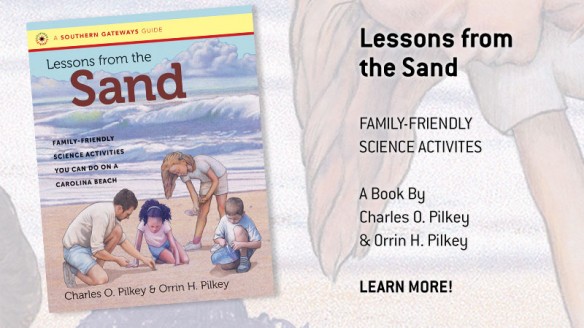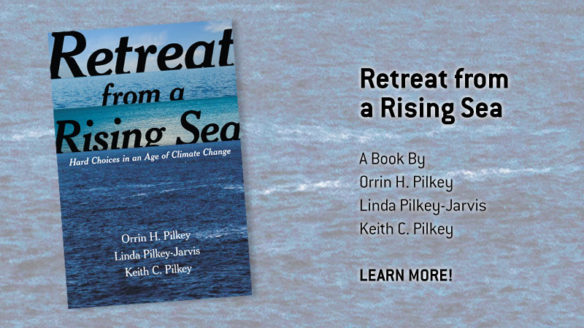
The Thames River Barrier, 2004. Photo source: © Andy Roberts, licensed under CC BY – SA 2.0 via Wikipedia Commons
By © Gary Griggs, Author of “Our Ocean Backyard- Collected Essays”
Hurricane Sandy has come and mostly gone, but the devastation left behind will take years to clean up and repair. The final damage toll was over $68 million for New York and New Jersey
alone. Requests for federal disaster aid from FEMA (lots) started before the storm had even passed, and the inevitable Monday morning quarterbacks immediately began devising all of the pos- sible solutions for protecting the coastal areas of New Jersey, New York City and Long Island in the future.
The total damage figures are huge, but the meteorological figures are in some ways, more alarming. Sandy produced the highest storm surges ever to hit New York City, nearly four feet higher than the previous highest water levels during Hurricane Donna in 1960.
New York City is particularly exposed to the sea, with water coming in through the Hudson and East rivers, and with a mean- dering total of hundreds of miles of exposed shoreline, much of it just a foot or two above sea level. Sea level is also now about a foot higher here than it was in 1900.
You might think that New York City would have thought about these things many decades ago, but sea – level rise and storms prob- ably weren’t as pressing in the 17th century when the city was first laid out. The early settlers were Dutch, who knew a thing or two about living very close to sea level. But the founding fathers must have felt that a few feet of freeboard was enough, or simply had other issues to deal with.
To add insult to injury, sea level along the Atlantic coast is likely to rise 3 to 4 feet or more by 2100, as the oceans continue to warm and ice sheets continue to retreat and melt. Sadly, the worst isn’t over and it’s not likely to get better any time soon. So despite the energetic calls to re – build and armor the shoreline against future disasters, there is wisdom in pausing for contemplation before jumping to employ the first band – aid from the bandwagon of ideas to come along.
There are a lot of greenhouse gases already in the atmosphere that we can’t get back, and we don’t have a switch in place to turn off what we are putting in every day now. Emissions continue to rise. In 2012, the Earth’s 7 billion people dumped 39 million tons of carbon dioxide in the atmosphere every day. Every day! Where is all this coming from? Well, 91% comes from burning fossils fuels and the manufacturing of cement, while the remaining 9% comes from land use activities (burning forests, and agriculture). And the overall emissions continue to rise each year.

Although China has now surpassed the USA in total carbon diox- ide emissions, there really isn’t much comfort in this statistic as we all share the same atmosphere. On the positive side, carbon dioxide emissions from the USA and the European Union have dropped in recent years, but on the other side of the fence, emissions from China and India are increasing. Off all those 39 billions of tons of carbon dioxide we emit globally each year, 50% remains in the atmosphere contributing to the warming we are experiencing, and 26% is taken up by land vegetation on the land. The remaining 24% ends up in the ocean, being taken up at the rate of just over one million tons every hour. This has consequences as well, primarily by making the oceans more acidic. But that’s another story.
So what are the planners, designers and engineers coming up with for New York City? There is the $6 billion system of floodgates that has been proposed, using Venice, The Netherlands, and London as examples. This approach raises some important questions about who or what gets to be protected and which neighborhoods are on their own.
Ten years ago, a research team from the State University of New York at Stonybrook, working with the state’s Environmental Protection Agency, put together a complex plan of levees, seawalls and floodgates for protecting most of New York City from storm surges. The estimated price tag of $10 billion at that time brought that proposal to a screeching halt.
Some are calling for a mix of hard structures, whether seawalls or storm barriers of some sort, combined with “soft strategies”, like constructing urban wetlands, tidal marshes, even artificial reefs intended to nurture oysters, which has been referred to as a blending of urbanism and ecology.
The hope here is that these engineered green spaces would absorb and reduce the force of incoming water, thereby protecting the shoreline. Porous streets of concrete have been proposed to soak up excess water like giant sponges, while other new streets would be designed to drain the surging water back into the harbor.
If Manhattan was a sparsely inhabited rural area, these ideas might be considered practical, but this is New York City – protecting it with oyster reefs and some wetlands? When everything – streets, subways, and underground parking garages-are all completely underwater with a storm surge of nearly 14 feet, porous concrete is not going to soak up the excess water, or drain the water back into the harbor. There is a need to be creative, but also a need to be realistic and fully consider the forces and water levels we are seeking to control, and the fact that sea level is going to continue to rise.
Its also important to come to grips with the reality that New York City isn’t the only large city in the United States (forget the rest of the world for a moment) that lies very close to sea level and
is exposed to hurricanes, extremely high tides and storm surges, or a rising sea. There are a few others to consider, in no particular order: Miami, Newark, New Orleans, Tampa, Boston, Wilmington, Virginia Beach, Charleston, Galveston, and on the west coast, Long Beach and parts of many of the low – lying communities surrounding San Francisco Bay, including San Francisco, Oakland, and San Jose.
Dr. John Holdren, Director of the White House Office of Science and Technology and former Professor of Environmental Policy at Harvard University, has said “With climate change we basically have three choices: mitigation, adaptation and suffering. We are going to do some of each. The question is what the mix will be.
The more mitigation we do, the less adaptation and suffering there will be”. We need to start making some very serious commitments to significantly reducing the emissions of greenhouse gases if we are to avoid a future that is not going to be pleasant for any of us.
Learn More: “Our Ocean Backyard – Collected Essays”; a Book by Gary Griggs
For the three billion people on Earth who live in coastal regions, the ocean is figuratively, if not literally, “our backyard.” The oceans enrich our lives in countless ways, but our interactions with them have not always been positive. Gary Griggs, a coastal geologist and oceanographer, is known for making science understandable, enjoyable, and accessible to non-scientists, was asked to write a bi-weekly column, “Our Ocean Backyard” for the Santa Cruz Sentinel…

